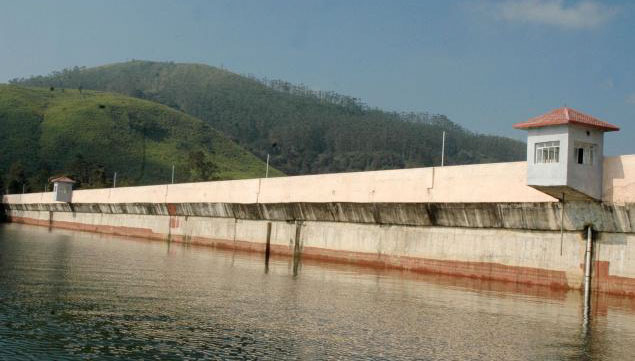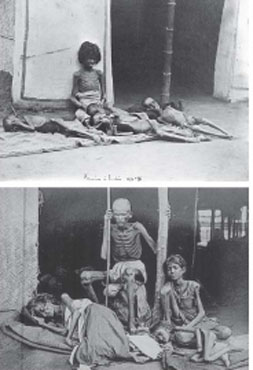
When we ask anyone in Kerala about Mullaiperiyar dam, even to a child, she would say that one day the dam would break and they all would be dead in the flood with the flutter in her eyes. To that extent the anti campaign is spread throughout in Kerala about the dam. They have started their campaign since the year 1979, the Malayala Manorama write up on “one more Marvi in west ghat mountains”. The spark they lit at that time, that one day the Mullaiperiyar dam would be washed off like Marvi at Gujarat, has started burning with flames now. They maintained such constant scare in the minds of the people by continuously carrying out relevant news, cartoons, screening short film and also by convening periodical political meeting about the Mullaiperiyar dam. The Highlight of the episode is the full length feature film “Dam999”. The two hour running film has indeed questioned the unity of India and the insecurity of Tamils in the public place.
In Tamil Nadu, the Mullaiperiyar issue has been seen as dull, routine and ritual flashing news once in a year in the Medias. If the Tamils do really understand the importance and the essential need of Mullaiperiyaar dam, then there will be no movement of food items to Kerala definitely resulting acute starvation in that region. This would have been a wiser opportunity to make the Kerala people understand that their food is more important than Mullaiperiyar dam.
The Tamil Nadu government, all the political parties, N.G.O.’s, charity organizations, educational institutions, do have their responsible role in raising the importance of the dam. Needless to make a film, dumping crores of money by spinning load of lies like Keralites. Enough we can share the truth between our known people. Enough if we make the people understand the oncoming poverty and famine in the absence of Mullaiperiyar. The famine is not illustrated with just words but could reveal the plight of our forefathers who had once encountered before the construction of Mullaiperiyar dam. Only on considering the burning issue the British quickly executed the dam construction. The idea to construct the dam was conceived more than hundred years back.
Right from the earlier period of several kingdoms, the people were engaged in agriculture purely relying on seasonal rains. Those were the days we did not have any basic facility either to preserve the rain water or to store the food grains for future. All the people were self sufficient in those days and content with the available trade and food in their respective region. Then their routine life became a challenge in 1876, which toppled their routine living pattern unexpectedly. The seasonal rains were drastically reduced. The South West monsoon betrayed many districts just with a drizzle. Even that did not happen in some districts.
In the earlier days when the South West monsoon failed, the North East seasonal rain had saved them to some extent many times. Even that period the average rain fall was around 27.6 inches. But in 1876, the average rain fall was just 6.3 inches only. This resulted an unbearable heat wave, scorched agricultural lands, dry bushes resulting major portion of Chennai districts turned as a howling desert scattered with sand dunes. All the shops were closed down due to paucity of food grains. The big landlords with the help of English, imported food grains from northern districts and Burma through trains and ships respectively. The imported food grains which were sold in black market with more profits.
To restrict the sales and to create an artificial demand for food grains, the shops were kept open just for few hours only. The rice once sold for fifteen kilos for a rupee, now sold four kilos for a rupee. Like that, the corn once sold for forty kilos for a rupee became available for six kilos for a rupee. (The measurement is given in kilos to comprehend easily). The imported food grains found it difficult to reach the desired destinations resulting artificial scarcity in the regions. The police department had found a dead person in acute starvation in the narrow street of Chennai strewn around him several hundred rupee notes. Poor or rich the starvation hit their belly equally.
 The pattern of eating for three times a day now reduced to once in two days. Those who could not afford food grains left to nearby mountains in search of nuts and roots. Some people consumed poisonous roots by boiling for three days to get rid of the toxin and poison in that. Tirunelveli district collector Mr.Mecukey expressed his dismay on coming to know about some people who were searching the food grains from the termite hole during his visit. There were more mortality due to the consumption of poisonous seeds and roots by the poor.
The pattern of eating for three times a day now reduced to once in two days. Those who could not afford food grains left to nearby mountains in search of nuts and roots. Some people consumed poisonous roots by boiling for three days to get rid of the toxin and poison in that. Tirunelveli district collector Mr.Mecukey expressed his dismay on coming to know about some people who were searching the food grains from the termite hole during his visit. There were more mortality due to the consumption of poisonous seeds and roots by the poor.
From one side there was no agriculture based employment and the other side continuously shutting down of spinning mills, the poor were left helpless to seek their living. To have their survival they started pledging their meager jewels, cattle, wooden doors, windows and even their cloths and finally became nomads in their own village. The poor started migrating to cities for living by crossing long distance by foot. The old and the children could not manage the starvation and thirst, many swooned and the roads were littered with corpse all along. The unlucky people just crossed those dead and merely passed to continue their journey in search of mouth full of food and a drop of water for their parched throats. The dogs and foxes were scavenging the corpse howling and watching greedily those who limp and shudder during their long journey for food.
In some places people started looting the warehouses of English and landlords and shared the food grains among them. The shop seals were broken. It was an uphill task for the English to maintain the law and order problem in such situation. Most of the people sent to Ceylon for their living were from Madurai, Trichy, Tanjore and Tirunelveli districts. For their easy deportation to Ceylon, special arrangements were made at Pamban harbor. Daily around thousand people were sent to Ceylon by boats to be employed in tea estates. Considering the severity of mounting unemployment, the English arranged plans for alternative employments for those people.
The British created an additional employments by way of laying more roads and train tracks. The daily wages were fixed 2 annas for male, 1 1/3 annas for female and ¼ annas for children. (one anna was equivalent to 1/16 rupee in those days). The wage fixed for male during normal seasons was 5 annas which now being reduced to 2 annas due to famine. The laborers were given food grains in lieu of wages, as they could not afford to buy food grains with that meager wages. Those girls once enjoyed wearing the costly dresses were forced to accept unfamiliar hard manual works like digging the soil etc., irrespective of status the people were suffered due to acute famine. The people were dead due to poverty, hard labour, deteriorating health conditions etc.,
Mr.Oldhome, the British by birth, while visiting the road laying site has written in his book that the road side resemble very much like a war field. It was disheartening to see the dead bodies scattered along the road side and people fighting desperately for life. Another British witnessed 29 corpses while crossing Vayanadu Mountain canyon. The bodies were strewn all along the road side, in the houses, in the taverns, in the temples and in agricultural fields. One more British while hunting at Servarayan Mountain, found dead bodies heaped in the forest. He added that it was heart rending to witness three children and two youngsters dead being huddled together as one family inside a bush. The dead bodies were left uncared and started decaying. The viceroy Lighten Lord did not care much about the people suffering due to starvation in Chennai province. It was highly paradoxical where the people were dying in one place, in Delhi the nobles, Lords and the great kings were enjoying lavish feast hosting the crowning ceremony of Queen Victoria. What we could have expected more from the Viceroy who was queen’s favorite poet.
Finally the unblessed famine came to an end in 1878 after a brief rain. More than one crores were reported to have been dead by one of the English officer Mr. William Thigbi in his book. The mortality percentage was more in Chennai province and those who suffered more were Tamils. The Mulliperiyar dam was constructed construing this famine in mind. The dam is a memory of those Tamils who suffered and died during that period. It is our prime duty to restore their glory to our coming generation to cherish. The sacrifices that were made by those will be meaningless, if the dam is destroyed. In that case, our generation will sure to face the same famine and starvation one day in the near future. It is our duty to explain the awareness of Mullaiperiyar dam to everyone we meet, and by sharing between friends in social media like face book, twitter, blog etc. It is not out of choice but as our duty to be fulfilled for our future generation.
In May 7, 2014, the Supreme Court quashes the law enacted by the Kerala government to restrict water level to 136 feet and allows Tamil Nadu to raise the level to 142 feet. The judgment confirms Tamil Nadu’s right. In spite of that, Kerala politicians will seek a stay on this verdict to gain political mileage. If the Kerala government passes a resolution disrespecting the verdict of the Supreme Court, Tamils must not hesitate to demand the outright dismissal of the Kerala government and its assembly. Tamils cannot win unless they stand together.
(Courtesy: Tamarai Tamil Magazine Feb 2012)
- Shahul Hameed
Tranlsated by Prema Prabha (premaprabha.premkumar@gmail.com)
You can send your articles to This email address is being protected from spambots. You need JavaScript enabled to view it.

